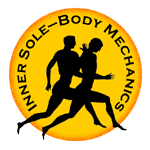
In 1975 I considered going to graduate school in physical education at Springfield College in Springfield, Massachusetts. I loved the feel of the school where students wore sweats to class, practicing what they were studying. Upon graduation, they were launched into front-line professional roles, asked to immediately help people by applying what others had figured out. Professionals necessarily work on the cutting edge, understanding their advice might change as more information becomes available. Unlike scientists, they are not given the luxury of doing years of research before advising clients.
Scientists take time to test their thinking and the reasoning behind it. They rely less on the expertise of others. I chose to go a short way down the road to the University of Massachusetts at Amherst where students were studying the science behind the profession, because I like to figure out the whys, and am not so comfortable relying on others.
In that spirit, my goal is to provide you, the layperson, scientist and health professional, with a unique overview that defines body mechanics and injury in a way that will help you puzzle through future questions for yourself. You will learn how the body works from a mechanical perspective; important because all movement and most injuries are critically linked to mechanics.
Everything you do involves mechanics. Move efficiently, and you will be a better dancer, singer model, waitress, skier, postal worker. You will swim, bike and run more efficiently. You will hit a ball and throw better. You will walk better.
You will sit and lie down in helpful, rather than harmful positions. Regardless of who you are, what you are trying to achieve, where you started from or where you will end up, everything will be easier if you make the most of your mechanics.
— Doug Stewart